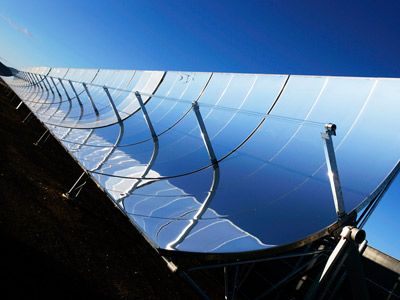Renewable energy sources are a hot topic lately and solar energy may be the hottest -- literally and figuratively. Solar energy is the energy provided by the sun's rays, and when harnessed, it can be turned into electricity and heat. It's plentiful, clean and renewable.
Solar cell manufacturers and suppliers believe photovoltaic (PV) technology will produce 15 percent of the energy the United States will consume in 2020 [source: National Renewable Energy Laboratory]. Solar power is growing in popularity around the world: In Japan, homes generated roughly 80 percent of the total 1.9 million kilowatts of solar energy produced in the fiscal year ending March 2008. Japan aims to increase its solar power output by 40 percent by 2030 [source: Hall]. Also by 2030, the United States' National Center for Photovoltaics (NCPV) has set the goal of using solar energy to supply 10 percent of the nation's power during peak generating times, as well as supply solar energy to foreign markets [source: Malsch].
Advertisement
It seems easy enough -- there's plenty of sunlight. In fact, the sun provides the Earth with enough solar energy in one hour (4.3 x 1020 joules) to power all of our energy needs for one year (4.1 x 1020 joules) [source: Biello]. But the dilemma over the years has been how to harness that solar energy and put it to use.
Traditional solar panels, the kind you see on rooftops, are crystalline silicon PV arrays -- solar panels that are made up of a collection of solar cells. More recently, thin-film solar technology has become the darling of the solar industry. Thin-film solar cells are made with CIGS (CuIn1-x Gax Se2) technology, and unlike the rigid panels, they're flexible and can be used in places other than rooftops (on windows, sides of buildings, cars, computers, etc.).
Researchers at the Australian National University (ANU) are working in collaboration with solar company Spark Solar Australia and Finnish materials company BraggOne Oy to transform how we think about and use solar power over the next three years. Affordable, abundant solar technology is coming soon to you.
Advertisement



